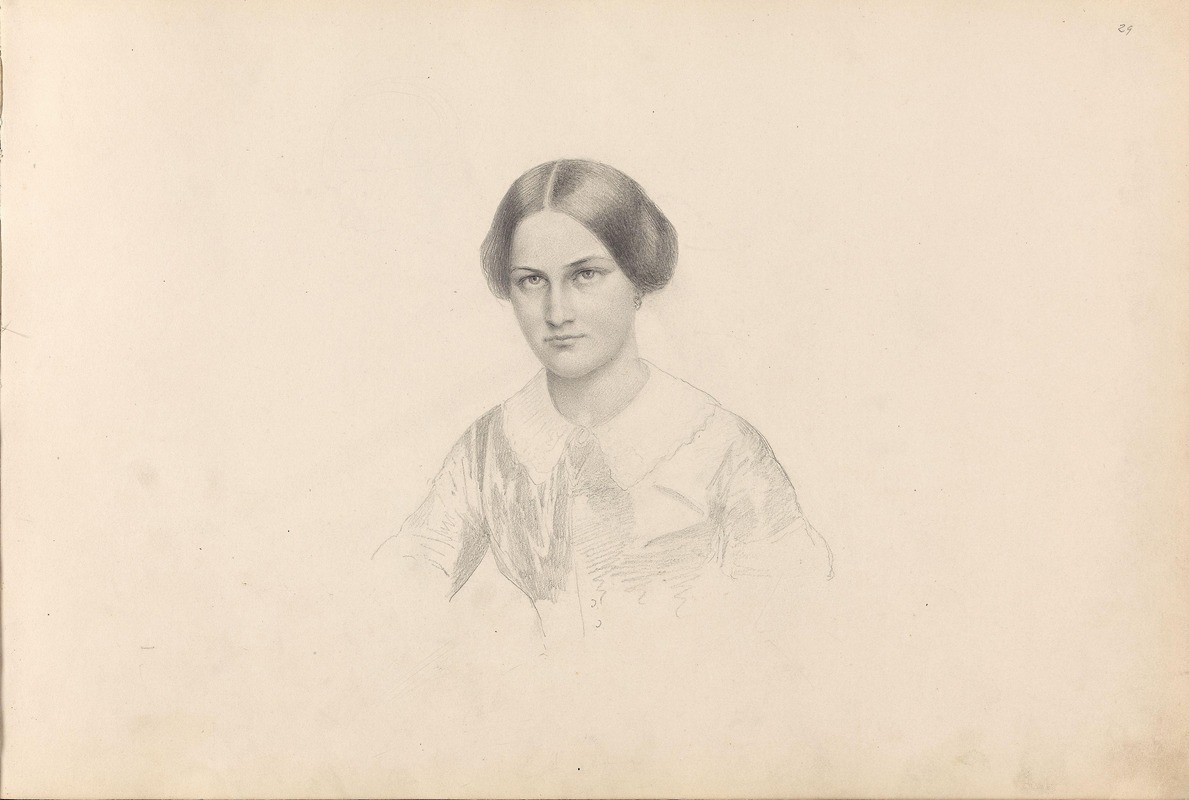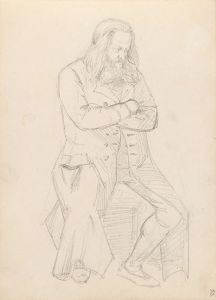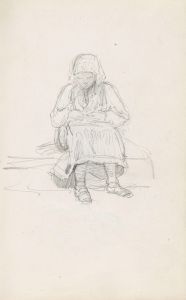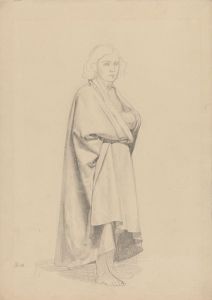
Portrait of a woman
A hand-painted replica of Adolph Tidemand’s masterpiece Portrait of a woman, meticulously crafted by professional artists to capture the true essence of the original. Each piece is created with museum-quality canvas and rare mineral pigments, carefully painted by experienced artists with delicate brushstrokes and rich, layered colors to perfectly recreate the texture of the original artwork. Unlike machine-printed reproductions, this hand-painted version brings the painting to life, infused with the artist’s emotions and skill in every stroke. Whether for personal collection or home decoration, it instantly elevates the artistic atmosphere of any space.
Adolph Tidemand was a prominent Norwegian painter in the 19th century, renowned for his contributions to the national romanticism movement. His works often depicted Norwegian folk life, traditions, and landscapes, capturing the essence of the country's cultural heritage. One of his notable works is "Portrait of a Woman," which exemplifies his skill in portraiture and his ability to convey the character and spirit of his subjects.
"Portrait of a Woman" by Adolph Tidemand is a fine example of his portrait work, although specific details about the painting, such as the identity of the woman or the exact date of creation, are not widely documented. Tidemand's portraits are known for their attention to detail and the realistic portrayal of the human figure, often reflecting the societal roles and cultural contexts of the time.
In this painting, Tidemand likely employed his characteristic style, which combines meticulous attention to detail with a deep understanding of the human condition. His portraits often feature a strong sense of individuality and personality, capturing not just the physical likeness but also the inner life of the subject. This approach aligns with the broader goals of the national romanticism movement, which sought to highlight the unique cultural and historical aspects of Norway.
Tidemand's work, including "Portrait of a Woman," is significant in the context of Norwegian art history. During the 19th century, Norway was undergoing a period of national awakening, and artists like Tidemand played a crucial role in shaping the country's cultural identity. By focusing on Norwegian subjects and themes, Tidemand and his contemporaries helped to foster a sense of pride and awareness of Norway's distinct cultural heritage.
The painting likely reflects Tidemand's interest in the everyday lives of Norwegian people, a theme that recurs throughout his oeuvre. His ability to portray his subjects with dignity and respect, regardless of their social status, is a testament to his skill as an artist and his empathy as a human being. This approach not only made his work popular during his lifetime but also ensured its enduring appeal.
While specific information about "Portrait of a Woman" may be limited, the painting can be appreciated within the broader context of Tidemand's work and the national romanticism movement. His portraits remain an important part of Norway's artistic legacy, offering insights into the country's cultural and historical landscape during a time of significant change.
Overall, Adolph Tidemand's "Portrait of a Woman" is a valuable piece of art that reflects the artist's commitment to portraying the essence of Norwegian life and identity. Through his detailed and empathetic approach to portraiture, Tidemand has left a lasting impact on the world of art, both in Norway and beyond.


















